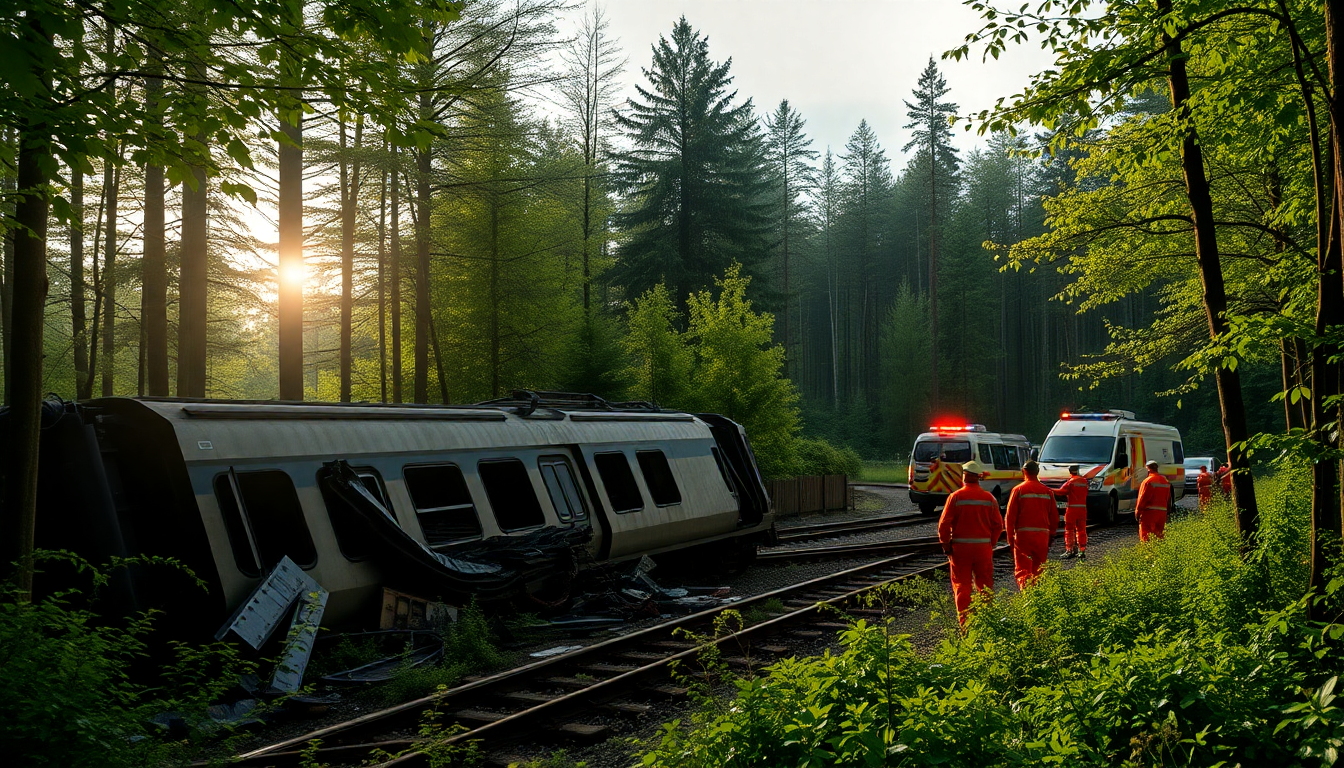Table of Contents
A tragic train derailment has shaken Germany, resulting in multiple fatalities and injuries. This heartbreaking incident unfolded in a forested area near Riedlingen and has sparked serious concerns about rail safety and infrastructure across the country. As authorities dive into the investigation, they’re looking closely at the role of severe weather as a potential factor in this derailment. But what exactly happened?
Details of the Incident
On a fateful Sunday evening, a passenger train carrying around 100 people derailed, leading to the tragic loss of at least three lives, including the train driver and a Deutsche Bahn employee. Over 50 passengers were injured, with 25 in critical condition. This incident took place in southwestern Baden-Württemberg, roughly 158 kilometers west of Munich. Eyewitness accounts and initial assessments indicate that two carriages went off the tracks under circumstances that remain puzzling.
Charlotte Ziller, the district fire chief, confirmed the fatalities and the number of injuries during a press conference, emphasizing the urgency of the situation as emergency services worked tirelessly to assist the victims. Video footage from the scene showed overturned train carriages, with rescuers navigating the chaos to reach those trapped inside. Can you imagine the fear and confusion those passengers must have felt?
Investigations and Potential Causes
As the investigation unfolds, authorities are considering the impact of severe weather in the region leading up to the derailment. Thomas Strobl, the interior minister of Baden-Württemberg, pointed out that heavy rains had affected the area before the incident, hinting that a landslide might have played a role. In response, Deutsche Bahn has suspended traffic over a 40-kilometer stretch of the affected route while cooperating with investigators to uncover the exact cause.
The train was traveling from Sigmaringen to Ulm when it derailed. Following the incident, helicopters were dispatched to transport the injured to nearby hospitals, showcasing the swift action of emergency services. Richard Lutz, the CEO of Deutsche Bahn, expressed his condolences to the families of those who lost their lives, acknowledging the deep shock felt within the rail operator’s community. How can we ensure that such tragedies don’t happen again?
The Implications for Rail Safety in Germany
This tragic event has reignited conversations about the state of rail infrastructure in Germany, a topic that has long been contentious among travelers. Even though the government has committed to investing significant funds to modernize the rail system, incidents like this raise serious questions about the effectiveness of current safety measures. To support those affected, the rail operator has set up a hotline for individuals and their families in the aftermath of this disaster.
Historically, rail travel in Germany has been considered safer than road travel, yet accidents like this remind us of the vulnerabilities within the system. The deadliest rail incident in Germany’s history occurred in 1998, resulting in 101 fatalities and underscoring the ongoing need for improvements in safety protocols and infrastructure integrity. As we look forward, can we leverage the lessons learned from this incident to enhance railway safety and prevent future tragedies?
The hope remains that the investigation will lead to significant changes in railway safety, ensuring that such a heartbreaking event is never repeated. After all, the safety of passengers should always be the top priority.


